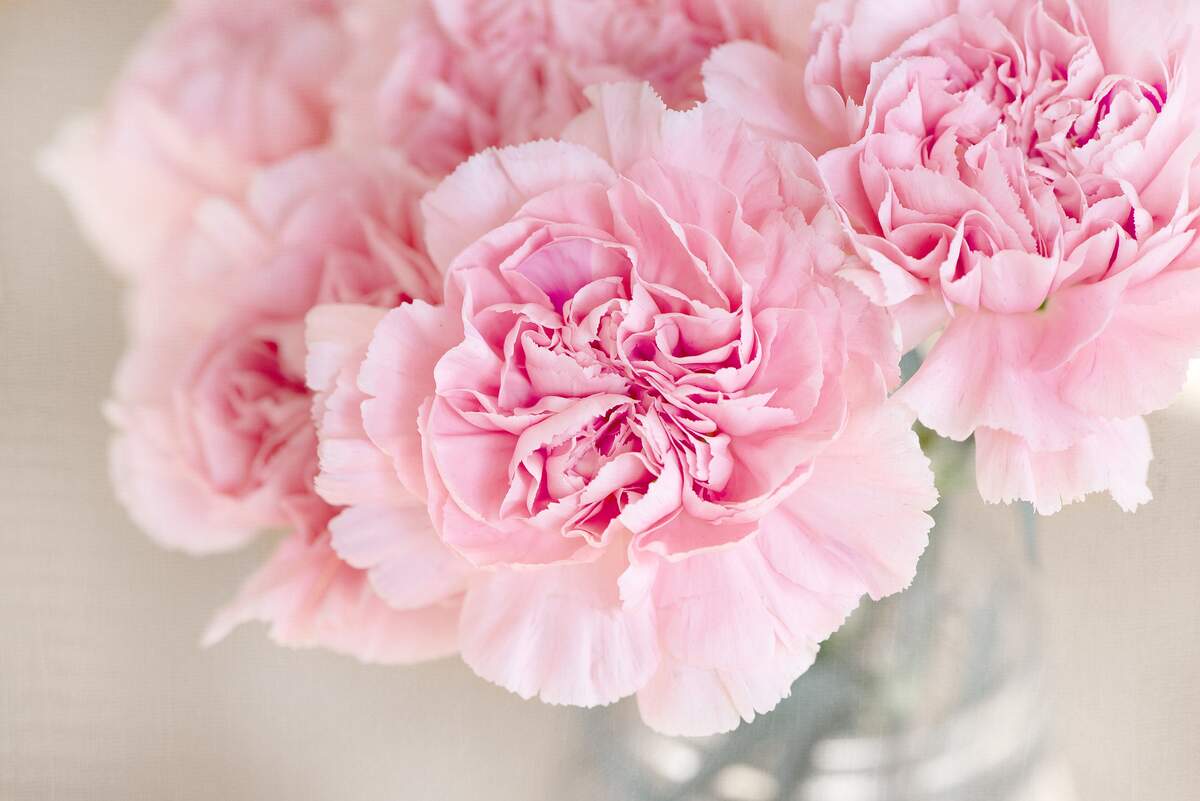

National Carnation Day
Also known as
Carnation Day
Red Carnation Day
Observed
annually on September 14th (1902 and 1903)
annually on January 29th (since 1903)
Dates
Founded by
Hashtags
Sources
http://www.ohiostatehouse.org/calendar/event?id=1386
http://www.ohiostatehouse.org/news/happy-birthday-to-ohio-governor-and-us-president-william-mckinley
https://web-holidays.com/blog/2012/02/16/national-carnation-day/
https://www.history.com/topics/us-presidents/william-mckinley
https://www.anrdoezrs.net/links/100298379/type/dlg/https://www.newspapers.com/image/20432684/
https://www.anrdoezrs.net/links/100298379/type/dlg/https://www.newspapers.com/image/228495311/
https://www.anrdoezrs.net/links/100298379/type/dlg/https://www.newspapers.com/image/330793982/
https://www.anrdoezrs.net/links/100298379/type/dlg/https://www.newspapers.com/image/53855118/
https://www.anrdoezrs.net/links/100298379/type/dlg/https://www.newspapers.com/image/571329490/
https://www.anrdoezrs.net/links/100298379/type/dlg/https://www.newspapers.com/image/689172765/
https://www.teleflora.com/meaning-of-flowers/carnation
https://www.wfmj.com/story/34376662/ohio-statehouse-remembers-mckinley-with-carnation-day
National Carnation Day—also known as Red Carnation Day, or simply as Carnation Day—is set aside to remember President William McKinley, who was born on today's date, and who was known to be fond of carnations, often wearing one on his lapel. McKinley's association with the carnation was longstanding, with the flower coming up at various moments throughout his political career. It started in 1876 when he was running for the United States Congress in Ohio on the Republican ticket. His opponent, Levi Lamborn, was a horticulturalist who had created a strain of bright scarlet carnations he named "Lamborn Red." Before debates between the candidates, Lamborn gave McKinley a boutonniere made with one of his carnations. After McKinley won the election, he began viewing carnations as good luck charms.
Not only would McKinley often wear a carnation, but he had a vase in his office filled with them, and he would hand out carnations from it to visitors. During his time in the White House, he kept a basket of carnations on the table in the Cabinet Room. A political joke of the time said that "whenever a man came to see the President, if he didn't get an office, he got a carnation. McKinley would pick up one of the flowers, and with his own hands place it in the visitor's buttonhole. Whenever a man left the President wearing a flower everybody knew that he didn't get what he went after."
President McKinley left this world by way of an assassin's bullet in September of 1901. According to legend, shortly before he was shot, he took off the carnation he was wearing and gave it to a young girl. Could it have been that the luck that he gained from carnations left him at that moment and giving away the flower was his undoing? A movement to honor McKinley through the carnation came shortly after his death—perhaps if he hadn't died in such a dramatic way, National Carnation Day would not have blossomed as it did. The official day was started by the Carnation League of America, a group founded by Lewis G. Reynolds of Dayton, Ohio, and first held in 1903. It is a silent memorial day during which observers are to wear a carnation. It was not started for "hero worship" of McKinley, but in the spirit of patriotism, and to "encourage the growth of good citizenship and advance the greatness of the country by proper observance of national holidays."
In the first years after McKinley's death, there were other early observations of the day apart from the one started by the Carnation League of America, and there was a debate about if the holiday should be held on McKinley's birthday or on the anniversary of his death. For example, in 1902 and 1903, hundreds wore a carnation on September 14—the date of McKinley's death—in Akron, Ohio, in his honor. In 1903, Senator Mark Hanna, who had been a close advisor to President McKinley, did not wear a carnation on the September date, and said of it, "I never wear one on this day. I am in favor of making McKinley's birthday carnation day. The day he died brings back too many unpleasant recollections." Some had begun wearing a carnation on the January date in 1902, but it wasn't until the following year that National Carnation Day became official, through the work of the Carnation League of America.
In the years that followed, the holiday was embraced by President Theodore Roosevelt's administration, and he and White House employees wore carnations on their coat lapels on the day. Ohio is McKinley's home state, and today the Ohio Statehouse in Columbus officially commemorates National Carnation Day. Statehouse tours highlight McKinley on the day, and in past years a special exhibit on McKinley has been put up in the Statehouse Rotunda. In addition, those who visit wearing red carnations or dressed in scarlet receive discounts at the Statehouse Museum Shop and at the Capitol Cafe. Of note, a National Carnation Day not related to McKinley began being observed in the 1920s, and lasted for decades, which was organized by the American War Mothers and the United Spanish War Veteran's auxiliary, and was held on the Saturday before Mother's Day.
Light red carnations symbolize admiration, while dark red carnations symbolize love and affection. Ironically, the carnation is also the January birth month flower. It also has been the state flower of Ohio since 1904, when it was designated as such in McKinley's honor, with McKinley's one-time opponent Levi Lamborn being one of the proponents for the designation.
William McKinley was born on January 29, 1843, in Niles, Ohio. He fought for the Union during the Civil War, and after returning home, he studied law, opened a practice in Canton, Ohio, and married Ida Saxton. As previously noted, he won a race to the United States House of Representatives in 1876. He served in the House for almost fourteen years, where he became known as a voice in support of protectionism, being a proponent of high tariffs and imported goods. At one point he was chair of the House Ways and Means Committee. He lost his race in 1890, and returned to Ohio the following year, where he won a race for governor. McKinley served as governor of Ohio from 1892–1896.
On account of his past political experience, because of his stance on protectionism, and with the assistance of his political confidant, Mark Hanna, a wealthy Ohioan industrialist, McKinley won the 1896 Republican nomination for president and went on to beat William Jennings Bryan in the general election. While in office, he steered through the Dingley Tariff Act, the highest protective tariff ever. But McKinley is perhaps best known for his doings in foreign affairs.
In Cuba, which was under Spanish control, Spain was squelching a movement for freedom. McKinley initially tried to avoid intervention and pushed for concessions from Spain. But following the explosion of the Maine, McKinley asked Congress for authority to intervene, and the Spanish-American War followed. The United States defeated Spain and the Treaty of Paris was signed in December 1898, being ratified by Congress the following February. It gave Puerto Rico, Guam, and the Philippines to the United States, and Cuba became independent—although the United States remained an influence in the country. Many viewed McKinley as an imperialist, especially after he sent troops to the Philippines to put down an uprising. Nonetheless, McKinley remained quite popular, and he won reelection in 1900, once again defeating William Jennings Bryan.
In September 1901, McKinley traveled to the Pan-American Exposition in Buffalo, New York. He gave a speech to 50,000 people on September 5. The following day, he was shot twice with a concealed handgun by Leon Czolgosz, an anarchist and unemployed mill worker from Detroit, while in the Temple of Music. Things were looking promising, but gangrene set in, and the president died on September 14. All these years later, the legacy of the fallen president lives on with the observance of National Carnation Day.
How to Observe National Carnation Day
The most appropriate way to observe the day is to wear a carnation, just as President McKinley often did, in a spirit of patriotism and to honor the late president. Some other ideas on how you could mark the day include:
- Visit the Ohio Statehouse. Take a tour, check to see if there is a special McKinley exhibit, and stop at the Statehouse Museum Shop and Capitol Cafe, where discounts are given if you are wearing a red carnation or scarlet clothing. Make sure to stop at the William McKinley Monument outside.
- Visit the William McKinley Presidential Library and Museum in Canton, Ohio. McKinley's tomb, the McKinley National Memorial, is adjacent to it.
- Stop at the National McKinley Birthplace Memorial in Niles, Ohio.
- Check out the William McKinley Memorial in Toledo, Ohio.
- Stop at the spot where McKinley was assassinated.
- Read a biography about William McKinley.
- Watch videos of William McKinley from the Library of Congress, including ones of him taking the oath of office and speaking at the Pan-American Exposition.





















